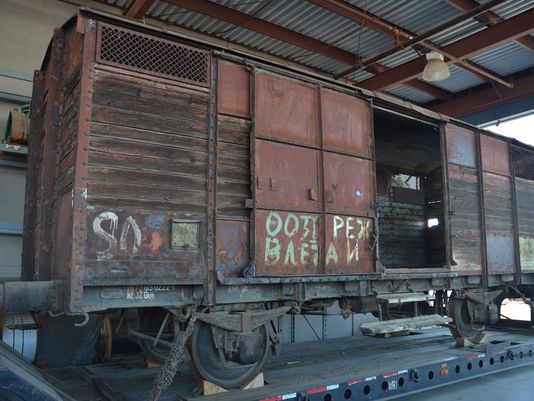The Nazi transport trains used to ferry prisoners to concentration camps during the Second World War are still known today for their cramped quarters, in which many suffered difficult journeys. The Chandler Center for the Arts is opening up the Center for Holocaust Education & Human Dignity, and they have decided to feature in their new exhibit one such train car that was used for Nazi prisoner transport—at least, they believe that is what is was used for.
By all appearances, the car they have acquired seems to fit the bill. The Chandler Center has had the car in its possession for two years now, and they know it to be of Slavic manufacture and German design. It was potentially made either sometime during or not long after WWI, and evidence seems to show that it was used for some sort of Nazi transport during WWII. The only question remaining is whether it was used for prisoners or supplies. The car was not decommissioned until over thirty years following the end of the war, so it is difficult to tell what it was used for initially.
Workers for the Jewish Community center have claimed that the site of the transport car is emotional for them, as it brings about thoughts of the poor souls who were taken to death camps against their wills, herded onto cars like cattle. Many such prisoners grew ill or even died during the incredibly unhygienic trip, yet the Nazi regime let them fall by the wayside, more than willing to lose prisoners, the AZCentral reports.
The Nazi train car has been subject to vandalism over the years, but much of this was left as is to preserve not simply the history of WWII, but that of the time passed in the meantime as well. Some structural repairs have been necessary to keep the car in shape for public viewing, but aside from that it has been maintained in a condition similar to that which it was in upon arrival. The center hopes that by maintaining its current state, they might increase their chances of eventually learning what sort of transport the car was used for.
The public will be allowed to view the Nazi transport car both inside and outside for absolutely no charge. The primary goal is simply education, allowing the public an up-close feel for the car’s cramped quarters. In the meantime, evidence as to the car’s intended purpose continues to be investigated and speculated upon. Whether or not the car itself was used for the Nazi transport of prisoners, cars like it certainly were. The chance to see them from both the inside and outside presents a rare look at history from a first-person point of view.
